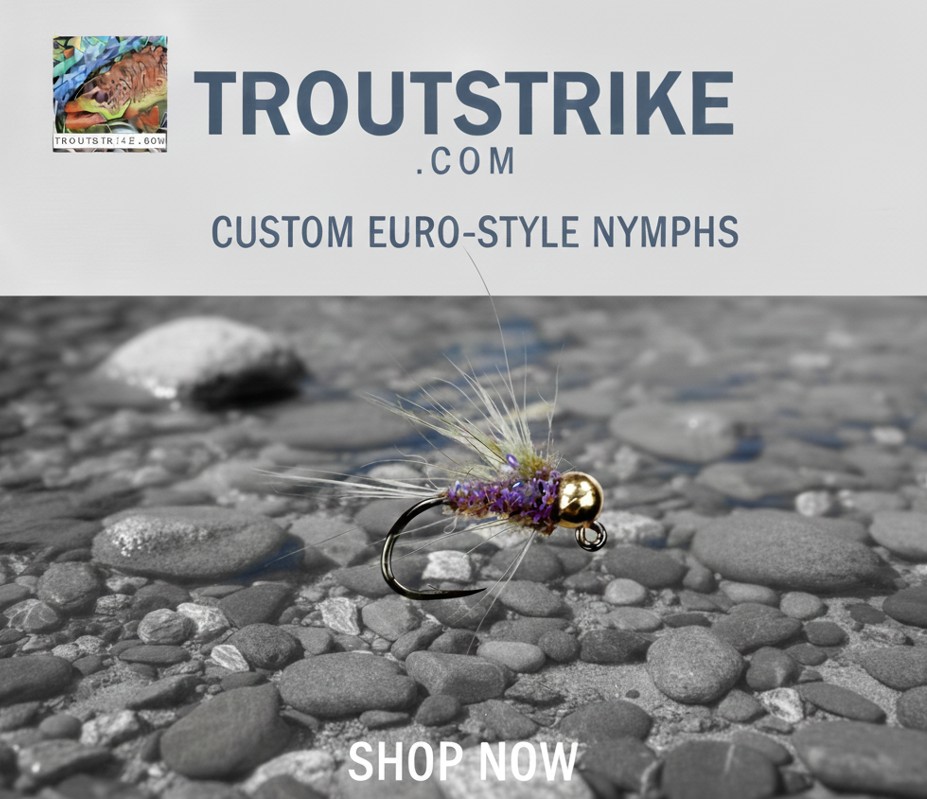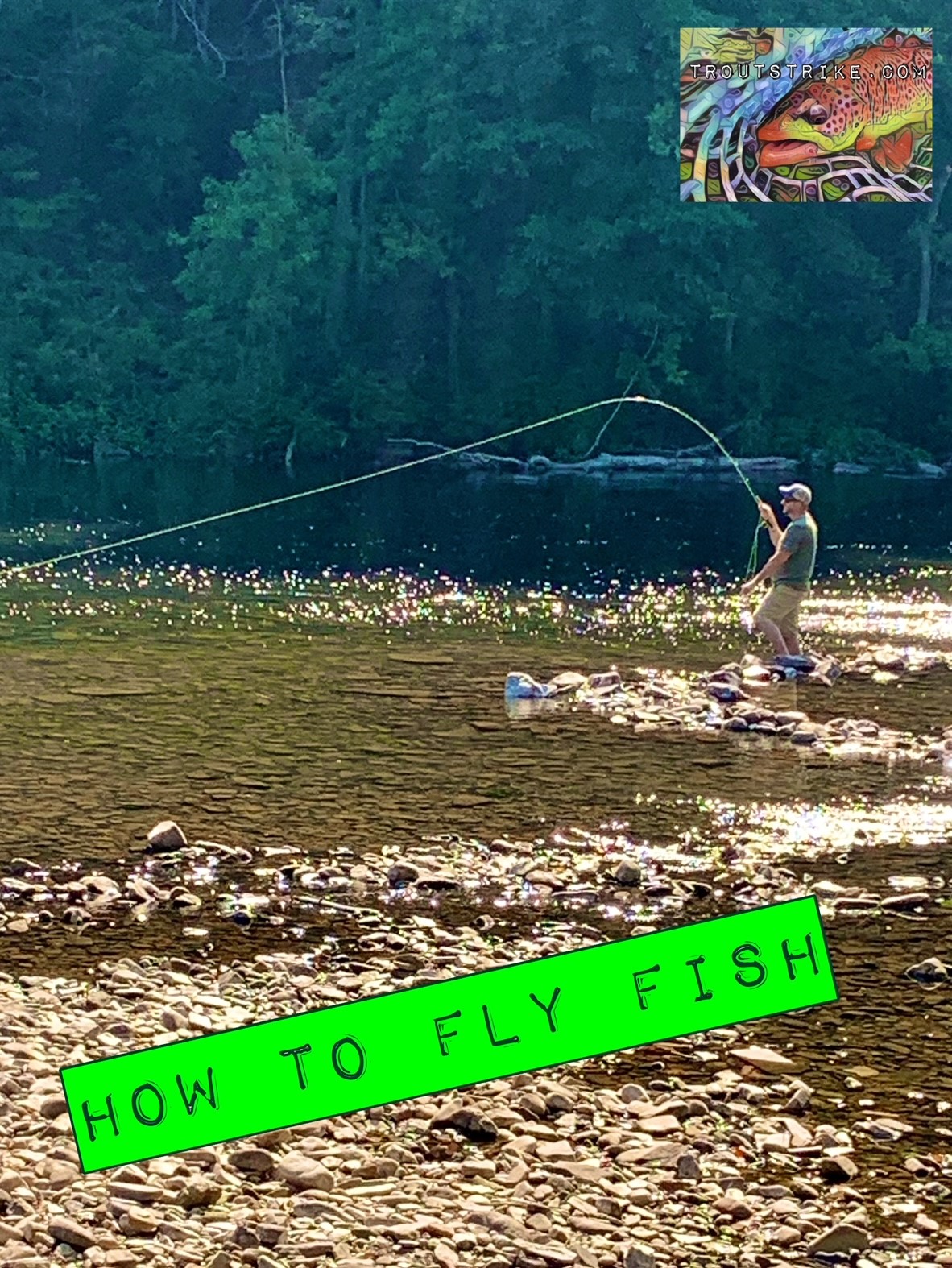Learning how to fly fish can change your life in more ways than you can imagine. Spending time on the water can provide you with solitude, as you connect with nature. For me, fly fishing has become a form of meditation, as it is one of the only times I am truly living in the present moment. This brief course will provide you with an overview of the sport. You will learn all of the basics to get you started, including learning to cast a fly rod. You will also be provided a list of essential materials needed to begin your fly fishing journey.

How is Fly Fishing Different than Spin or Gear Fishing?
The biggest difference between fly fishing and “regular fishing” is the way in which an angler casts to the fish. When spin fishing, an angler uses light weight monofilament to cast a heavy lure or rig. The weight of the lure or rig propels the cast, enabling the angler to reach the fish. When fly fishing, anglers are trying to propel flies that have very little weight. Therefore, the mass of a weighted fly line propels the fly to the fish.
What Gear Do I Need to Get Started?
Three Essential Pieces

The first three pieces of gear you will need are a fly rod, a fly reel, and a fly line. Fly rods come in a variety of weights and sizes. It is important to match the reel and the line weight to the weight of the fly rod. An easy way to get started is by purchasing a fly rod combo kit. These combo kits will make sure the weight of your rod, reel and line are all a match.

Fly Rod Selection
Fly rods come in a variety of “weights.” The “weight” of a fly rod is determined by the rod’s size and strength. For example, a 2-weight fly rod is considered a lightweight fly rod. A lightweight fly rod is designed to cast lighter flies. Conversely, a 9-weight fly rod is considered a heavy weight rod and is designed to cast heavier flies. Generally, the type of fish you are hoping to catch will dictate the weight of the fly rod you choose. The size of the water you will be fishing also may determine which weight is best for you. If trout are your target, a 9-foot 5-weight rod is the perfect rod to start with. It’s a versatile rod that is light enough to cast delicate dry flies but can also handle casting heavier nymphs and streamers.
| 2-3 Weight | Pan Fish |
| 4-5 Weight | Trout/Small Bass |
| 6-7 Weight | Large Bass/Salmon/Steelhead |
| 8-9 Weight | Pike/Muskie |
| 10+ Weight | Saltwater |
Learn the Essential Knots
Before you do anything else, you need to invest a little time to learn two essential knots for when you are out on the water. They do not take long to learn. Trust me, you do not want to begin your fly fishing journey without mastering these.
The Clinch Knot
The clinch knot is the first knot you should learn. It is essential because it is how you connect your fly to the end of your line.
The Double Surgeons Knot
The double surgeons knot is used to attach a piece of tippet material to your leader. You will need to do this when you need to extend the length of your leader.
How Do I Learn to Cast a Fly Rod
Learning how to cast a fly rod takes a little practice. It’s best to begin in an open area where there is nothing to interfere with your casting. You do not need to be on the water to learn to cast. This can be done in your back yard or any open area.
Step 1: Load and Shoot
Casting a fly rod requires a back cast followed by forward cast. An abrupt stop with each cast creates the energy needed to propel the fly line and the fly. To load the fly rod, an angler begins a back cast and abruptly stops the rod tip. When the rod tip stops, the fly line continues until it straightens. This is called “loading the fly rod.” Once the fly rod is “loaded,” the angler beings the forward cast. Again, the angler abruptly stops the tip of the rod during the forward cast, but the line continues to shoot forward. This is what is called shooting the fly line.
The abrupt stops create a bend in the rod. The bend in the rod creates the energy needed to load and then shoot the fly line. When learning to cast, you will often hear about stopping the rod at 2 o’clock (during the back cast) and at 10 o’clock (on the forward cast).
Step 2: It’s Not a Whip

Now remember, you are not Indiana Jones. It’s a fly rod. It’s not a whip. Most people learning to cast want to make a whipping motion with the fly rod. This is caused by transitioning from the back cast to the forward cast too quickly. When this happens, you will hear a cracking sound (like a whip). You want to prevent this by pausing after you have abruptly stopped your backcast. One tip I learned when teaching someone to cast is to have them say the word “trout” after the abrupt stop and before he or she begins the forward cast. The pause gives the fly line enough time to straighten behind you and the energy it needs to then propel forward.
Step 3: Draw a Straight Line
When casting a fly rod, you are drawing two straight lines with the rod tip. The line you are drawing begins with a back cast, stopping the rod tip at 2 o’clock. The second straight line is drawn when you bring the rod tip forward, stopping it a 10 o’clock.
Time to Practice
At this point, you are ready to get out and practice. Find an open area and begin practicing drawing two straight lines with your rod tip. Make sure you are accelerating smoothly and stopping the rod tip abruptly at 10 o’clock and 2 o’clock. Start with short casts until you get a feel for the motion. Then you can gradually let out more line to make longer casts.


